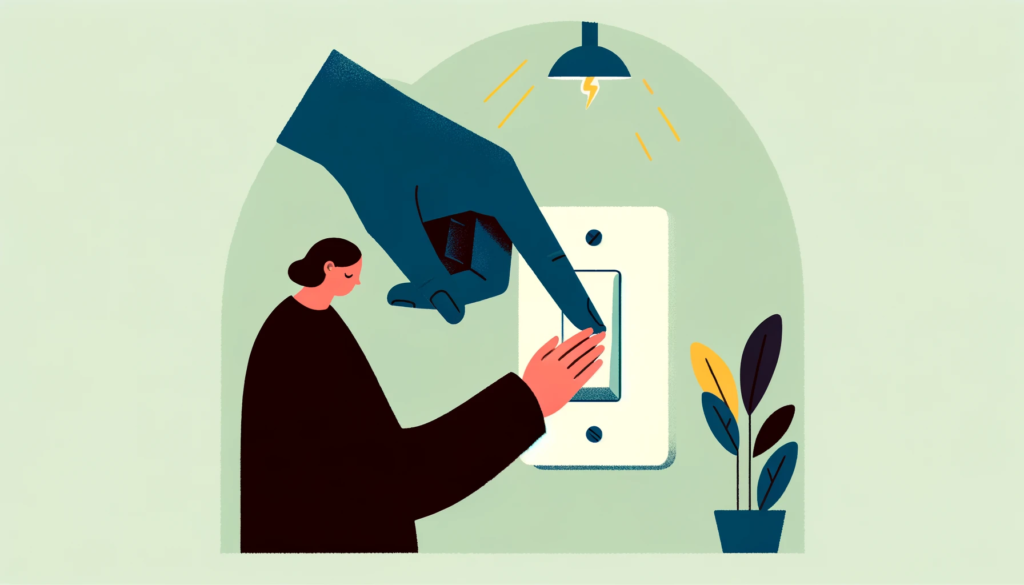Building automation is an emotional business. Anyone who has been in an office when the AC fails during a brutal July heatwave knows the chaos that ensues. Tempers fly, polite veneers melt away, and the atmosphere turns as heated as the room itself. This vividly illustrates the emotional stakes in effective building automation.
Yet, we as an industry stay mainly in our lanes of logic, solving the technical challenges of decarbonization, integration, dutifully crunching the numbers to make things more efficient. That’s all well and good, but we must also confront the human element in the equation. Yes, we spend hours programming controllers, tweaking machines, deploying AI, but make no mistake, we are in the people business.
The success of our energy-saving efforts hinges on the behaviors of the occupants. Recognizing the psychological factors behind resource usage is crucial to avoid missing opportunities for meaningful conservation.
Nudging Towards Smarter Conservation
In psychology, nudges are gentle pushes that steer people towards better choices without stripping away their freedom. Think of a road sign that flashes your speed in bright red if you’re driving too fast—a nudge to slow down. Unlike mandates or bans, nudges do not eliminate options or force individuals to choose a particular path. Instead, they make the preferred choice easier or more attractive.
In building management, similar strategies can significantly impact energy conservation. Several studies demonstrate promising effects of nudging in promoting energy conservation.
Accountability: The Missing Link
Fostering a strong sense of personal accountability is crucial to changing behaviors toward resource usage. When individuals understand that their actions have direct consequences, they are more likely to regulate their behavior. Push button systems for HVAC overrides are a good use case for lack of accountability.
In commercial settings, tenants push a button, and cool air or heat flows out. There’s little consideration for the underlying systems and resources required. This disconnect can lead to overuse and misuse.
Furthermore, while these systems are convenient, they rarely track who made the HVAC request. This anonymity can lead to irresponsible usage, as there is no direct consequence or feedback loop for the individual. In a large office building, a tenant (or cleaner?) might stay late and press the button. The system obliges without questioning the necessity or efficiency of this action. The cost and environmental impact of this decision are spread across the entire building, diluting personal responsibility.
Deploying HVAC systems that track individual usage and provide reporting can be effective nudges. When tenants receive reports on their HVAC usage—particularly when it is linked to their personal or department’s name—they become more aware of their consumption patterns. This awareness can lead to more conscientious use of resources.

The Rebound Effect
Ever devoured a whole pack of “fat-free” cookies because they seemed less sinful? That’s the Rebound Effect—consuming more of something because it feels less harmful. In energy terms, this means using more of an efficient service because it seems less costly or damaging. Here are three forms of the Rebound Effect:
- Direct Rebound Effect: More energy-efficient services, like heating and cooling, may be used more liberally because they’re cheaper to operate.
- Indirect Rebound Effect: Money saved from efficient technologies may be spent on other energy-consuming activities or products.
- Psychological Rebound Effect: People might believe that using energy-efficient technology justifies less cautious behavior, like leaving lights on longer or setting extreme thermostat temperatures.
Combating the Rebound Effect requires smart meters, automated controls, and educational programs that make occupants aware of their real impact. It’s about ensuring our improvements in efficiency don’t lead to greater consumption through carelessness.
Feedback Intervention
Feedback intervention is a powerful tool in shaping energy conservation behaviors. It involves providing individuals with real-time or retrospective information about their resource usage. For example, showing users how many gallons of water they used while showering or the electricity consumed during their daily activities. Common tools like smart thermostats, water meters, and smart plugs play a crucial role in monitoring and reporting usage.
Leveraging feedback interventions allows facilities to heighten occupants’ awareness of their resource consumption, fostering more conscientious behavior and significant energy savings. This approach not only helps conserve resources but also cultivates a culture of mindfulness and responsibility, setting the stage for long-term behavioral changes.
However, feedback interventions can sometimes have limited effects. A study of UK households using smart energy monitors showed that while these devices initially increased awareness about energy use, they tended to be ignored over time—a phenomenon known as “backgrounding.” To counter this, several strategies can be implemented:
- Varied and Dynamic Feedback: Keep the feedback engaging by regularly changing its format, location, or type. Alternating between visual graphs, email updates, and in-app notifications can maintain user interest.
- Gamification: Introduce elements of gamification such as rewards, challenges, and competitions. For example, organizing contests among departments to see who can reduce their energy usage the most can spur enthusiasm and participation.
- Personalization: Tailor feedback to individual preferences and behaviors to make it more relevant and actionable. Offering personalized tips and comparing users to their peers can boost engagement and motivate change.
- Periodic Reminders: Send reminders or alerts periodically to keep users engaged with their consumption patterns. These reminders can highlight changes in usage, offer new energy-saving tips, or set forthcoming conservation goals.
- Social Norms and Comparisons: Employ social norm feedback by displaying how an individual’s usage stacks up against others. Knowing that peers are achieving lower consumption can drive competitive spirit and encourage reduction.
- Integrated Education Programs: Combine feedback with educational initiatives that clarify the importance of energy conservation and the impact of personal behavior on overall consumption.
By employing these strategies, feedback interventions can remain a potent force in driving sustainable behaviors, helping to ensure that energy conservation efforts are both effective and enduring.
Anticipating Resistance
Upgrading systems and changing behaviors isn’t just a logistical challenge—it’s a psychological one. There’s inevitable resistance, often due to upfront costs or inconvenience. However, the long-term benefits of reduced operational costs and improved sustainability make these investments worthwhile. More importantly, fostering a culture of mindfulness and sustainability can turn a building into a beacon for environmentally conscious tenants, giving it a significant edge in a competitive market.
Conclusion
Effective resource management in buildings isn’t just about the latest technology—it’s about engaging with the people who use those spaces. By leveraging psychological insights and technological solutions, we can foster a culture of conscious conservation. It’s time to move beyond the status quo and inspire every individual within our facilities to take part in sustainable practices. Together, we can turn the tide on energy waste and pave the way for a more sustainable future. After all, when it comes to conservation, every little nudge helps.
References
- Hargreaves, T., Nye, M., & Burgess, J. (2013). Keeping energy visible? Exploring how householders interact with feedback from smart energy monitors in the longer term. Energy Policy, 52, 126-134. https://doi.org/10.1016/j.enpol.2012.03.027
- Chatzigeorgiou, I. M., & Andreou, G. T. (2021). A systematic review on feedback research for residential energy behavior change through mobile and web interfaces. Renewable and Sustainable Energy Reviews, 135, 110187. https://doi.org/10.1016/j.rser.2020.110187
- Staddon, S. C., Cycil, C., Goulden, M., Leygue, C., & Spence, A. (2020). Intervening to change behaviour and save energy in the workplace: A systematic review of available evidence. Renewable and Sustainable Energy Reviews, 128, 109876. https://www.pure.ed.ac.uk/ws/portalfiles/portal/26350110/26341867._FPV._Staddon..pdf
- Delmas, M. A., Fischlein, M., & Asensio, O. I. (2013). Information strategies and energy conservation behavior: A meta-analysis of experimental studies from 1975 to 2012. Energy Policy, 61, 729-739. https://doi.org/10.1016/j.enpol.2013.05.109
- Fischer, C. (2008). Feedback on household electricity consumption: A tool for saving energy? Energy Efficiency, 1(1), 79-104. https://doi.org/10.1007/s12053-008-9009-7



